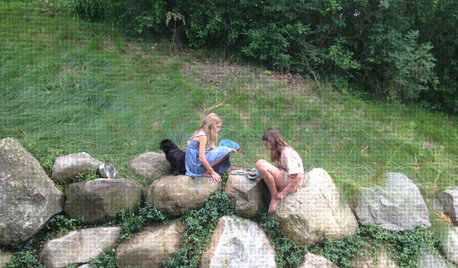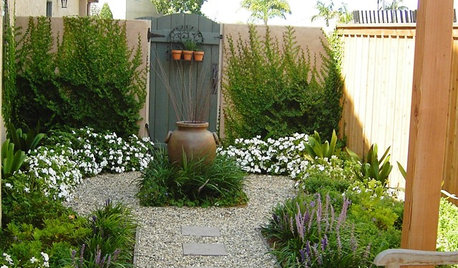Lawn is turning yellow help
dmues
9 years ago
Related Stories

GARDENING GUIDESHow to Fix Bare and Yellow Lawn Spots
Restore your turf’s good looks by reseeding unsightly patches
Full Story
LIFETurn Off the Video Games and Turn On Your Kid's Creativity
Going nuts planning summer activities? Kids overdosing on screen time? It may be time to foster more self-directed play
Full Story
GARDENING GUIDESHow to Turn a Side Yard Into a Glorious Garden Room
With just 8 feet or so, you can turn a plain side yard into a garden that lets you get carried away
Full Story
GARAGESRoom of the Day: Detached Garage Turned Teen Cave
New room serves up Ping-Pong, disc golf and board games, and hosts movie nights and sleepovers
Full Story
GARDENING GUIDES8 Unthirsty Plants Help You Save Water in Style
Spend less effort and money on your landscape with drought-tolerant and native plants that liven up your yard
Full Story
LIGHTINGGet Turned On to a Lighting Plan
Coordinate your layers of lighting to help each one of your rooms look its best and work well for you
Full Story
PETSHow to Help Your Dog Be a Good Neighbor
Good fences certainly help, but be sure to introduce your pup to the neighbors and check in from time to time
Full Story
PETS6 Ways to Help Your Dog and Landscape Play Nicely Together
Keep your prized plantings intact and your dog happy too, with this wisdom from an expert gardener and dog guardian
Full Story
SELLING YOUR HOUSE10 Low-Cost Tweaks to Help Your Home Sell
Put these inexpensive but invaluable fixes on your to-do list before you put your home on the market
Full Story
DECLUTTERINGDownsizing Help: How to Get Rid of Your Extra Stuff
Sell, consign, donate? We walk you through the options so you can sail through scaling down
Full StoryMore Discussions









lou_spicewood_tx
dchall_san_antonio
Related Professionals
Middle River Landscape Architects & Landscape Designers · Piqua Landscape Architects & Landscape Designers · Wake Forest Landscape Contractors · Waterbury Landscape Contractors · Arlington Landscape Contractors · Berwyn Landscape Contractors · Chesapeake Ranch Estates Landscape Contractors · Lakeville Landscape Contractors · Los Banos Landscape Contractors · Miller Place Landscape Contractors · North Canton Landscape Contractors · Pacifica Landscape Contractors · Ronkonkoma Landscape Contractors · Cooper City Swimming Pool Builders · Missouri City Swimming Pool BuildersdmuesOriginal Author
lou_spicewood_tx
dchall_san_antonio